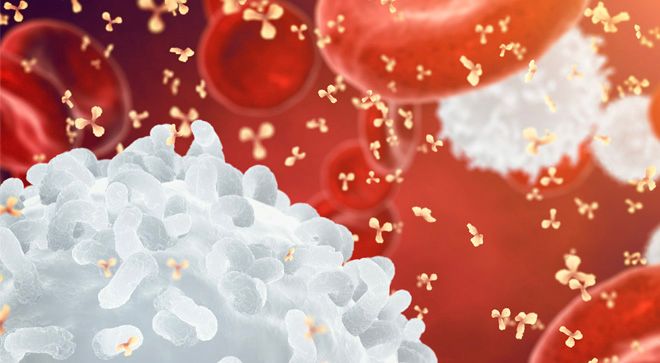Among heavily pre-treated patients with relapsed or refractory mantle cell lymphoma, fixed-duration Columvi (glofitamab) demonstrated high complete response rates and a manageable safety profile with appropriate support, according to study findings published in the Journal of Clinical Oncology.
After a median follow-up of 19.6 months, the complete response (CR) rate was 78.3% and the overall response rate (ORR) was 85%. Out of 31 patients who had received previous treatment with a Bruton tyrosine kinase inhibitor, the CR rate was 71% and the ORR was 74.2%. After the administration of Columvi, cytokine release syndrome occurred in 70% of patients, including a lower incidence for patients with Gazyva (Obinutuzumab) pretreatment (Gpt) who received 2,000 milligrams (63.6%) compared with those receiving 1,000 mg (87.5%).
“Responses were highly durable beyond end of treatment, and a fixed treatment duration (approximately 8.5 months) may help reduce the treatment burden for patients with [relapsed or refractory mantle cell lymphoma],” study authors wrote.
Glossary
Cytokine release syndrome: it is caused by a large, rapid release of cytokines into the blood from immune cells affected by the immunotherapy.
Complete response rate: percentage of patients whose cancer completely disappears.
Overall response rate: percentage of patients whose cancer shrinks or disappears.
Duration of complete response: average length of time a complete response last.
Fixed-duration treatment: treatment given for a set period of time, regardless of response.
Neutropenia: lack of white blood cells.
Regarding side effects, all patients experienced at least one or more, with the most common being cytokine release syndrome (CRS; 70%), neutropenia (38.3%) COVID-19 (31.7%) and pyrexia (31.7%). Severe or life-threatening side effects occurred in 65% of patients, with common side effects including neutropenia (23.3%), pneumonia (11.7%), anemia (11.7%) and CRS (11.7%).
Serious side effects were experienced by 78.3% of patients. These included CRS in 36.7% of patients and infections in 33.3%. In addition, eight patients died due to infection, with one each from septic shock, post-acute COVID-19 syndrome and pneumonia, and five from COVID-19 or COVID-19 pneumonia.
Furthermore, side effects leading to interruptions in Columvi dosing were reported in 36 out of 60 patients. The most common side effects included COVID-19 or COVID pneumonia (15%), neutropenia (15%), cytokine release syndrome (10%) and pneumonia (10%). Additionally, four out of 60 patients (6.7%) had to withdraw from Columvi treatment due to side effects, all of which were infections.
In the 1,000-milligram (mg) Gpt cohort, CRS events were reported in 87.5% of patients. In the 2,000 mg Gpt cohort, CRS events were reported in 63.6% of patients. One patient in the 1,000 mg Gpt cohort died due to progressive disease while experiencing an ongoing CRS event, but all other events had resolved. CRS events primarily occurred during cycles one and two. No deaths related to CRS were reported.
“The safety profile of [Columvi] was predictable and manageable with appropriate support, with a lower rate of CRS events observed with 2,000 mg versus 1,000 mg Gpt,” study authors wrote.
A total of 60 patients, with a median age of 72 years, who underwent at least one previous line of therapy were included in the trial.
Patients received Gpt at a dose of either 1,000 mg or 2,000 mg for seven days before the first dose of Columvi. The initial dose of Columvi could be administered as a single dose or divided over two days if required. Step-up dosing of Columvi was given once daily on day 8 (2.5 mg) and day 15 (10 mg) of Cycle 1. Starting on day 1 of cycle 2, the target dose was either 16 mg or 30 mg, administered once every three weeks for a total of 12 cycles.
“Fixed-duration treatment with off-the-shelf [Columvi] monotherapy achieved high CR rates in heavily pretreated patients with R/R MCL, including patients previously treated with a BTKi,” study authors concluded.
Reference
“Glofitamab in Relapsed/Refractory Mantle Cell Lymphoma: Results From a Phase I/II Study” by Dr. Tycel Jovelle Phillips, et al., Journal of Clinical Oncology.
For more news on cancer updates, research and education, don’t forget to subscribe to CURE®’s newsletters here.
















